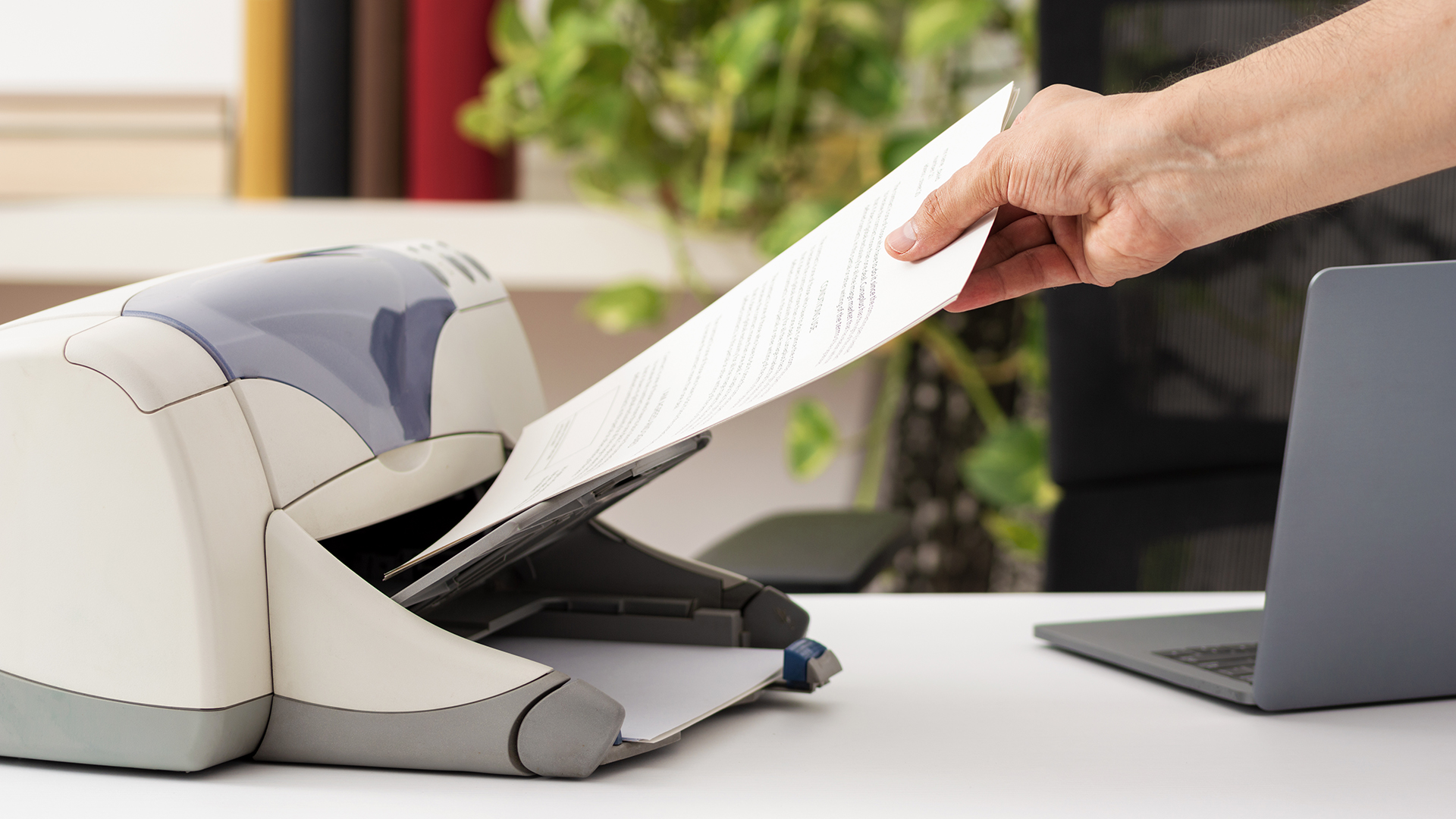How to use a printer
From setting up to the correct maintenance, we run through the top things to focus on when learning how to use a printer.

If you’ve recently purchased a home or office printer you may be frantically searching, 'how to use a printer'. While it’s certainly worth reading the instruction manual and following any setup guides that have come with it, we’ve laid out some essential steps to follow and advice you can use when getting started. The majority of home and office printers are either the inkjet or laser type, though we’ll specifically be looking at the more budget-friendly inkjet models in this guide. Here’s everything you need to know to get started…
Setting up for the first time
Modern printers will likely have the ability to print wirelessly with AirPrint from smart devices like phones and tablets, as well as desktop PCs and laptops with WiFi and Bluetooth. They should also allow you to plug directly into your computer via a USB cable, it’s best to try the wired route first to make sure that it's correctly set up and all of the necessary printer drivers are installed. Some printers won’t allow you to print wirelessly until you’ve done this step as it needs to be set up on your internet router correctly. We also ran into compatibility issues with old printers and new 5G Wi-Fi routers so be sure to read your instruction manual to make sure your printer is compatible with your router.
Using AirPrint to print from a smart device is a brilliant time-saving feature and convenience, however, it only gives you very basic printing options. If you need more control when printing it’s best to either download a specific app for your printer, such as HP Smart, or alternatively transfer your media to a desktop PC or laptop and print from there.
Media type
An often overlooked part of the printing process is the media you choose to print on. You’ll need to determine the size of your prints, such as A4 or A5, or even larger A3 and A2 prints if your printer is capable, then put the paper into the printer loading tray and adjust the sliding guide so that it fits snugly against paper to stop the paper drifting when it’s pulled through.
You may also be able to enable borderless printing on some models so you can print up to the edge of the paper with no border. Another consideration is whether to go for a glossy or matt media type. Colors and contrast tend to look a little punchier on glossy varieties but they also suffer from glare in direct sunlight and fingerprints will show up on them more readily. You can customize the paper size, borderless printing, and matt or glossy media in the printing settings.
For more accurate colors you could use a screen monitor and printer calibration devices for the most accurate colors which will provide you with a bespoke printer profile for your setup.
Ink cartridges
Inkjet printers usually come with two cartridges, one for black and a tricolor cartridge for cyan, magenta, and yellow colors, but some models have individual cartridges for every color. One issue with tricolor cartridges is if one ink, such as yellow, runs dry before the others you still need to purchase an entirely new cartridge, and this leads to a lot of waste.
Sign up to receive the latest news, reviews, buying guides and deals direct to your inbox
The upside of having individual ink cartridges is that you can simply replace the low ones. Read your instruction manual on how to remove the ink cartridges from your printer, then unclip and remove them, it will say the model number on each cartridge so you know which ones to buy when you need more, some also come in XL varieties which will last longer. You can also try using cheap ink refill kits online to save some money. This can be a more cost-effective route, though some newer models feature electronic chips in the cartridges which tell the printer if they’ve been tampered with which could cause a problem.
Maintenance
Most households use budget-friendly inkjet printers which spray tiny droplets of ink out of a print head nozzle precisely onto a sheet of paper to create the print. However, print heads can get clogged if the printer goes long periods without being used, so try to do a full-color print once every few weeks to reduce the chance of this happening. You should also be able to print a test sheet which will show you if there is any banding or streaks and which print head is affected. This is usually done through the printer interface or via the desktop app.
Many manufacturers build the print head into the cartridge so you get a fresh print head every time you put in a new ink cartridge. In this case, if you have a very stubborn clog you could put in a new cartridge to fix the issue if all else fails.
But, if you own a printer where the ink cartridges and nozzles are separated you could use a product like PermaJet CleverClogs. This pumps a solution through the print heads to soften and remove stubborn clogs from the print head, and we’ve had great success using this product in the past.
Special printer functions
Alongside the basic printing functions some printers may have additional features such as a flatbed scanner for making copies, duplex printing to print on both sides of a sheet easily, a built-in fax machine, the ability to print on special media like handmade paper or card, and a memory card slot. It’s worth reading the specification and your user manual to make sure you’re getting the most out of any additional features that your printer may have.
Dan is Technique Editor on PhotoPlus: The Canon Magazine magazine. With over a decade writing about all things tech he’s written for a variety of publications before joining Future in April 2019 in that time working across Top Ten Reviews, Digital Camera World, PhotoPlus, NPhoto, Digital Camera and Digital Photographer.

